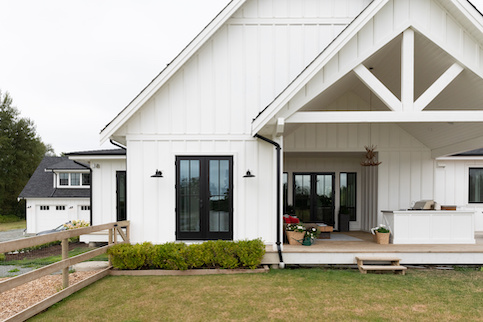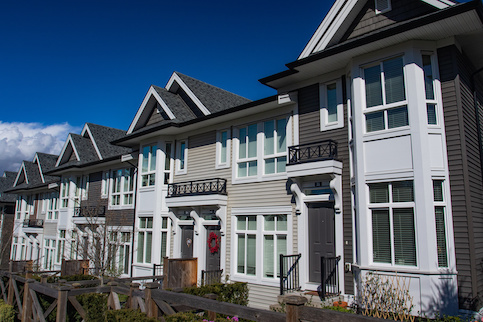Investing in real estate can be a great way to diversify your financial portfolio and add an additional stream of income. Although many people undoubtedly associate investing in real estate with becoming a landlord or fixing up a home and flipping it for a profit, those aren’t your only options.
For investors who want to purchase real estate without taking on the responsibility of being a landlord or trying to sell a property, passive real estate investing may be a better fit.
Let’s take a look at the ins and outs of passive real estate investing so you can determine if this is an option that piques your interests.
What Is A Passive Real Estate Investment?
A passive real estate investment allows investors to purchase a share of different properties rather than buying an entire home on their own. Since they only own a share of a property and not a property in its entirety, investors aren’t responsible for maintenance and upkeep. The process is completely hands-off.
See What You Qualify For
Buy A Home
Discover mortgage options that fit your unique financial needs.

Refinance
Refinance your mortgage to have more money for what matters.
Tap Into Equity
Use your home’s equity and unlock cash to achieve your goals.
The Difference Between Active And Passive Investing
To better understand how passive investing works, it’s important to know the difference between active and passive investments.
Active Investing
Active real estate investing involves buying physical properties on your own. The two main methods of active real estate investing are:
- House flipping: House flipping means buying a house in need of repairs at a low price, making the necessary improvements, and selling the property at a higher price for a profit.
- Buying rentals: Active investors can also buy homes with the intention of renting them out. This can be done by buying move-in ready properties and listing them for rent immediately. The other option is to fix up older homes and rent them out once the properties are ready.
Active investing requires more oversight and involvement from the property owners. As the owner, you’ll be responsible for home repairs, collecting rent and managing the rental.
Passive Investing
Passive real estate investing allows investors to buy properties and not sweat the oversight and management of a rental business. Someone else is in charge of handling these responsibilities, which include finding qualified properties, screening tenants, collecting rent and maintaining the property.
The Pros And Cons Of Passive Real Estate Investments
All investments carry some amount of risk, and it’s important to weigh the pros and cons of passive real estate investing before you start. Here are a few advantages and disadvantages to be aware of.
The Pros Of Passive Real Estate Investing
Numerous pros are associated with passive real estate investing. Let’s look at just a few.
More free time: When you invest in real estate passively, you won’t have to deal with the responsibilities of a landlord. That means someone else will manage the properties, find reliable tenants and collect rent. You’ll have more free time to pursue other interests and identify other investment strategies.
No experience required: Operating a rental property business is easier when you have experience and know how to find the right types of properties maintain those properties and secure reliable tenants. With passive real estate investments, you’re able to rely on the expertise of someone else and invest in real estate even if you’ve never bought a house before.
Lower upfront costs: Passive investing lets you buy a portion of a property rather than buying an entire home on your own. Because you invest a much smaller amount of money, it frees up your cash for other investments.
Diversifying your portfolio: Investing in real estate can help you diversify your portfolio and hedge against unexpected downturns in the stock market. The more diversified your portfolio, the better your potential for strong returns.
The Cons Of Passive Real Estate Investing
Now it’s time to examine the downsides of investing in real estate passively.
No control: Passive real estate investing allows you to buy into a pool of properties overseen by someone else. They control the types of properties purchased, the repairs each home receives and whether to sell a property.
Lower profit potential: Passive investors receive dividends based on how much they invest in the real estate fund. The result is lower profits than if they managed everything on their own.
Less flexibility: Passive investing doesn’t offer the same flexibility as active investing. You can’t decide to sell individual properties, and you can’t move into one if you sell your primary residence and need somewhere to live.
Take the first step toward buying a house.
Get approved to see what you qualify for.
How To Start Earning Passive Income In Real Estate
It’s possible to start investing in real estate passively in several ways. Here are a few of the most common methods for building your real estate portfolio.
Real Estate Investment Trusts (REITs)
Real estate investment trusts are operated by companies that oversee the purchase, management and rental of different properties. When you invest in a REIT, you contribute a set amount of money that the company uses toward the purchase and management of commercial and residential properties.
As those properties generate profit, you’ll receive a dividend based on the amount you invest in the trust. The more you invest, the higher your potential return. You can buy into a REIT through your preferred exchange.
Online Real Estate Funds
Online real estate funds are crowdsourced investment funds focused on purchasing, managing and selling real estate. As with REITs, you can contribute a smaller amount of money to the fund.
As the fund generates profits, you receive a portion of those profits based on how much you contribute to the fund. Keep in mind that these funds can be riskier than REITs because they’re entirely crowdfunded and may not have the same amount of oversight as other investment platforms.
Real Estate Investment Groups (REIGs)
Real estate investment groups are similar to REITs. Much like a REIT, when you invest in a REIG, the group uses your contributions for purchasing and managing properties.
However, these groups are more closely aligned to crowdfunded real estate funds than REITs. No minimum contributions are required to participate, and group members share management duties. These groups aren’t traded on exchanges and often operate locally, so you’ll need to reach out to other passive real estate investors in your area to find out more about the available groups.
Remote Ownership
Remote ownership allows real estate investors to purchase individual properties and partner with a property management company to oversee maintenance, upkeep, tenant screening and rent collection. The property owner doesn’t have to do anything beyond oversee the property management company and make sure they’re doing their job well.
This method allows investors to be slightly more involved in the process but pass the burden of the work onto another company.
How To Decide If Passive Investing In Real Estate Is Right For You
Passive real estate investing isn’t for everyone. You’ll want to take a few factors into consideration before you start putting your money into real estate managed by another person.
Your Long-Term Goals
Before you start investing in real estate, it’s best to consider your long-term goals. For example, if you’re trying to diversify your current investment portfolio, investing may be a good fit. That said, if you’re working to save for a house or want to pay off debt, investing money into passive real estate funds may not be the best option.
Your Budget
Passive investing offers less profit potential than active investing, but it costs significantly less money to get started. Take a look at your budget and decide how much money you’re willing to contribute to your new real estate investment portfolio. If you have the funds and time, buying investment properties on your own may help you reap a larger return. However, if you don’t have tens of thousands of dollars available, real estate investment trusts or groups can help you get started.
Your Knowledge Of Real Estate
You can invest in real estate passively with little to no knowledge of the real estate market or the home buying process. But, if you’re experienced with buying real estate and feel confident in your ability to make informed decisions about properties, active investing may be a better investment.
Your Risk Tolerance
When you invest in real estate actively, you alone bear the burden of the investment risk. If the property requires expensive repairs or is tough to rent out, you’ll have to come up with the funds to make the repairs or cover the expenses associated with the property. However, when you invest in real estate passively, you and other investors share the risk. Consider your risk tolerance before you start investing in real estate.
FAQs About Passive Real Estate Investing
Check out the answers to these frequently asked questions for a better understanding of whether passive real estate investing is a good choice for you.
Is active real estate investing better than passive investing?
It all depends on your goals and your financial situation. If you want to be in charge of your investments and have ultimate control over each property, active investing is often a great choice. However, if you don’t want to deal with the hassle of being a landlord or don’t have enough assets to invest in a property as the sole owner, passive real estate investing might be a better option.
Is it possible to earn passive income in real estate?
Yes! The best way to make your investment truly passive is to invest in a REIT or REIG, or use an online real estate investment platform. These methods let you invest in properties without taking on the all the responsibilities of being a landlord.
Should I invest in real estate?
Ultimately, you’ll want to consider your long-term goals before investing in real estate either passively or actively. You’ll face an upfront cost and likely want to weigh the potential returns against the risks before making your decision.
The Bottom Line
Passive real estate investing can be a wonderful strategy for expanding your financial portfolio. Just keep in mind that you won’t own a property outright or control what happens to the property over time.
Investing in real estate actively, on the other hand, will give you more profit potential, which can be a big incentive.
Take the first step toward buying a house.
Get approved to see what you qualify for.

Victoria Araj
Victoria Araj is a Staff Writer for Rocket Companies who has held roles in mortgage banking, public relations and more in her 15-plus years of experience. She has a bachelor’s degree in journalism with an emphasis in political science from Michigan State University, and a master’s degree in public administration from the University of Michigan.












